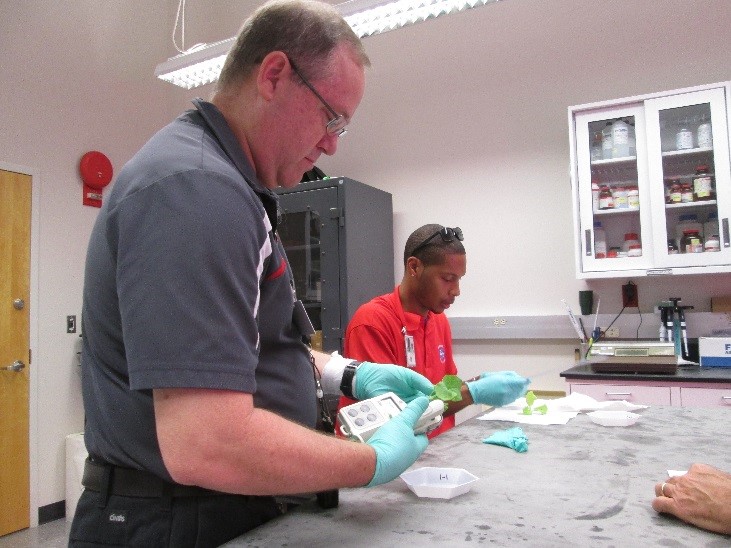Mars Base 1 Plant Lab Development Process
It is important to us that our designers and educators understand the NASA story so that we can share it with our students in a compelling and inspiring way. Keeping this in mind, we began working with the scientists involved in NASA’s Veggie project in order to develop a Martian greenhouse that is believable and relevant to the work NASA is currently doing in this field. In 2015 some of our educators met with Trent Smith, project manager for ISS ground processing and research, who explained the Veggie project and guided us through a tour of the Veggie lab in the SSPF. As the vision for our plant lab began to take root (if you will forgive the pun) we again sought out Mr. Smith’s expertise. At that time, he introduced us to Matt Romeyn and Matthew Mickens, two scientists who are currently working on Veggie pilot tests as part of Dr. Gioia Massa’s team. They invited us to observe and participate in their SLED harvests and, by August 2016, a strong working relationship had begun to form between our two teams.
Since then, we have provided a number of volunteers to assist with Veggie harvests and planting operations. Our curriculum developer for the plant lab, Dee Maynard, has participated in more than a dozen sessions to date, including planting and harvesting SLED cabbage, harvesting microgreens, assisting with the ground operations of Veggie-03 initial setup, and harvesting PONDS cabbage. We have involved our educators, contractors, architects, and software designers in Veggie harvests so that they will also have a clear vision of the concept underlying the development of the Mars Base 1 plant lab and greenhouse.
Dr. Matthew Mickens and educator Sam Quirk taking chlorophyll readings with equipment used at Mars Base 1 Plant Lab.
This is not just a tourist attraction, nor is it a science classroom. This is a working laboratory in partnership with NASA. Our experimental designs are in accordance with protocols set up by Matthew Mickens and Matt Romeyn, who have provided us with spreadsheet layouts, harvest instructions, and lesson objectives for student pilot tests of microgreen crops. Once our experiments are complete, the data we collect will be shared with Veggie to assist them in determining “best performers” for further testing at the SSPF and aboard the ISS. Mr. Romeyn has also offered to evaluate our light caps to assist us in selecting lighting treatments compatible with the Veggie standards. One of these caps (purchased by DNC) is currently on loan to Veggie, set up in a chamber at the SSPF where it is successfully growing potatoes in Martian simulant.
We anticipate this mutually-beneficial partnership to continue into the future and are excited to see where it will lead us!





